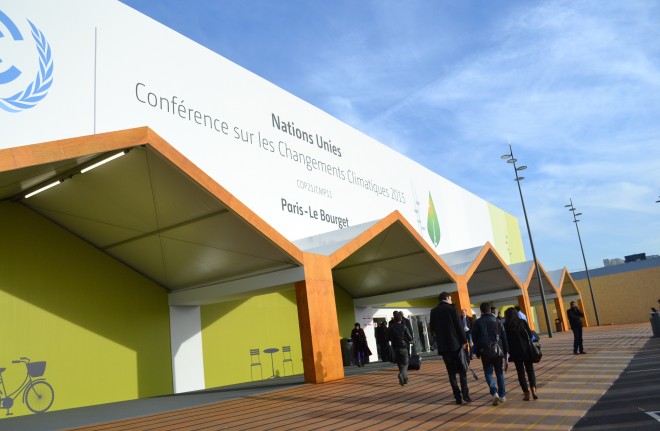
The Le Bourget Convention Center, venue of the 21st Conference of Parties (COP21). Photo by Kristine Angeli Sabillo/INQUIRER.net
PARIS – Will an “Indaba of Solutions” at the 21st Conference of Parties (COP21) finally result in a legally binding agreement to address the continuing effects of climate change?
Such is the hope of the 195 parties represented at the United Nations climate change conference in Paris, France, whose representatives are in the midst of what many are hoping to be the final marathon session of reiterations and objections on issues still bracketed, or remain in contention.
“We must do this and we can do this,” French Foreign Minister Laurent Fabius, COP21 president, said at the end of the fifth Comite de Paris (Committee on Paris) held earlier. “I think, dear friends, that we will make it.”
COP21, which began last Nov. 30, 2015, aims to ink an agreement among legally binding parties to cap the global temperature rise to either under 1.5 degrees or under 2 degrees Celsius below preindustrial levels.
It adopted on its second week the indaba format in order to arrive faster at a consensus on a legally binding agreement that will take effect in 2020. The current approach has been widely praised due to its inclusivity, a stark contrast with the infamous failure of the climate talks held in Copenhagen in 2009.
LOOKBACK: Climate talks in Copenhagen in epic fail
In an indaba format of talks, each of the 195 parties part of COP21 is given the equal opportunity to voice out their opinions in order to work toward a consensus. The latest of which, dubbed as the Indaba of Solutions, is intended to focus only on arriving at solutions to bracketed items.
The current draft is down to 12 pages with only 50 phrases still bracketed, or items still up for negotiation, from the previous 367. Among these items are key articles on loss and damage and climate finance.
READ: PH will not cross ‘red line’ on loss and damage
The indaba format traces its origins to the Zulu and Xhosa peoples in South Africa.
To further speed up negotiations, the COP21 presidency has also ordered smaller caucuses to convene simultaneous with the indaba in order to fully work on contentious issues. These caucuses, attended normally by 10 to 20 parties with points to raise regarding these issues, are then expected to report their consensus to the indaba. RAM
RELATED STORIES
What’s behind movement for ‘high ambition’ in Paris?
PH to battle it out for climate goals